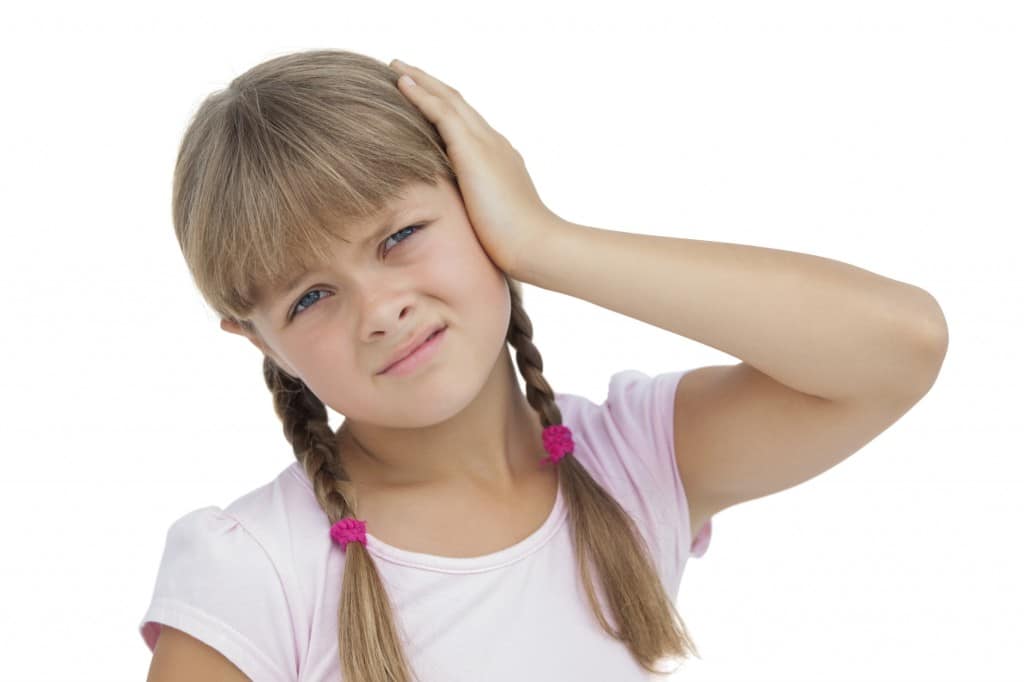
To understand earaches you must first know about the Eustachian tube, a narrow channel connecting the inside of the ear to the back of the throat, just above the soft palate. The tube allows drainage — preventing fluid in the middle ear from building up and bursting the thin ear drum. In a healthy ear, the fluid drains down the tube, assisted by tiny hair cells, and is swallowed.
The tube maintains middle ear pressure equal to the air outside the ear, enabling free eardrum movement. Normally, the tube is collapsed most of the time in order to protect the middle ear from the many germs residing in the nose and mouth. Infection occurs when the Eustachian tube fails to do its job. When the tube becomes partially blocked, fluid accumulates in the middle ear, trapping bacteria already present, which then multiply. Additionally, as the air in the middle ear space escapes into the bloodstream, a partial vacuum is formed that absorbs more bacteria from the nose and mouth into the ear.
Why do children have more ear infections than adults?
Children have Eustachian tubes that are shorter, more horizontal, and straighter than those of adults. These factors make the journey for the bacteria quick and relatively easy. A child’s tube is also floppier, with a smaller opening that easily clogs.
Inflammation of the middle ear is known as “otitis media.” When infection occurs, the condition is called “acute otitis media.” Acute otitis media occurs when a cold, allergy or upper respiratory infection, and the presence of bacteria or viruses lead to the accumulation of pus and mucus behind the eardrum, blocking the Eustachian tube.
When fluid forms in the middle ear, the condition is known as “otitis media with effusion,” which can occur with or without infection. This fluid can remain in the ear for weeks to many months. When infected fluid persists or repeatedly returns, this is sometimes called “chronic middle ear infection.” If not treated, chronic ear infections have potentially serious consequences such as temporary or permanent hearing loss.
How are recurrent acute otitis media and otitis media with effusion treated?
Some child care advocates suggest doing nothing or administering antibiotics to treat the infection. More than 30 million prescriptions are written each year for ear infections, accounting for 25 percent of all antibiotics prescribed in the United States. However, antibiotics are not effective against viral ear infections (30 to 50 percent of such disorders), may cause uncomfortable side effects such as upset stomach, and can contribute to antibiotic resistance. Medical researchers believe that 25 percent of all pneumococcus strains, the most common bacterial cause of ear infections, are resistant to penicillin, and ten to 20 percent are resistant to amoxicillin.
Is surgery effective against recurrent otitis media and otitis media with effusion?
In some cases, surgery may be the only effective treatment for chronic ear infections. Some physicians recommend the use of laser myringotomy, using a laser to create a tiny hole in the eardrum. The treatment is done in the doctor’s office using topical anesthesia (ear drops). Laser myringotomy works by providing several weeks of ventilation for the middle ear. Proponents suggest this can reduce the many courses of antibiotic treatment for severe ear infections and eliminates the need for surgical insertion of tubes with general anesthesia.
Before the procedure:
Prior to the procedure, the otolaryngologist will examine the patient for a description of the tympanic membrane (eardrum) and the middle ear space. An audiometry may be performed to assess patient hearing. A tympanometry will be performed that tests compliance of the tympanic membrane at various levels of air pressure. This test provides a measurement of the extent of middle ear effusion, Eustachian tube function, and otitis media.
The procedure:
During the procedure, a small incision is made in the ear drum, the fluid is suctioned out, and a tube is placed. In young children, this is usually done under a light, general anesthesia; older patients may have the procedure performed under local anesthesia. There are over 50 different tube designs, all in different shapes, color, and composition. In general, smaller tubes stay in for a shorter duration, while large inner flanges hold the tube in place for a longer time. Some recent tubes have special surface coatings or treatments that may reduce the likelihood of infection.
After the procedure:
Immediately after the procedure, the surgeon will examine the patient for persistent or profuse bleeding or discharge. After one month, the tube placement will be reviewed, and the patient’s hearing may be tested. Later, the physician will assess the tube’s effectiveness in alleviating the ear infection.
What is the most common surgical treatment for ear infections?
The most common surgical procedure administered to children under general anesthesia is myringotomy with insertion of tympanostomy tubes (TT). A tube is inserted in the middle ear to allow continuous drainage of fluid. The procedure is recommended for treatment of: chronic otitis media with effusion (lasting longer than three months), recurrent acute otitis media (more than three episodes in six months or more than four episodes in 12 months), severe acute otitis media, otitis media with effusion and a hearing loss greater than 30 dB, non-responsiveness to antibiotics, and impending mastoiditis or intra-cranial complication due to otitis media.
If the patient is age six or younger, it is recommended that tubes remain in place for up to two years. Most tubes will fall out without assistance. Otherwise, the specialist will determine when the tubes should be removed.
Your ENT physician will recommend the most effective treatment for your child’s ear infection.